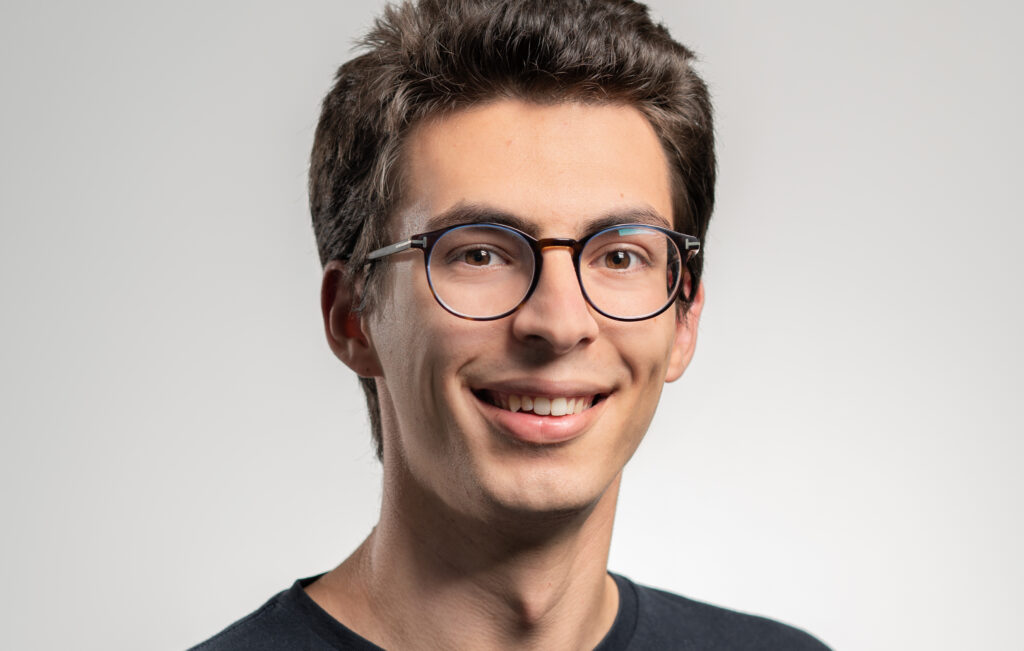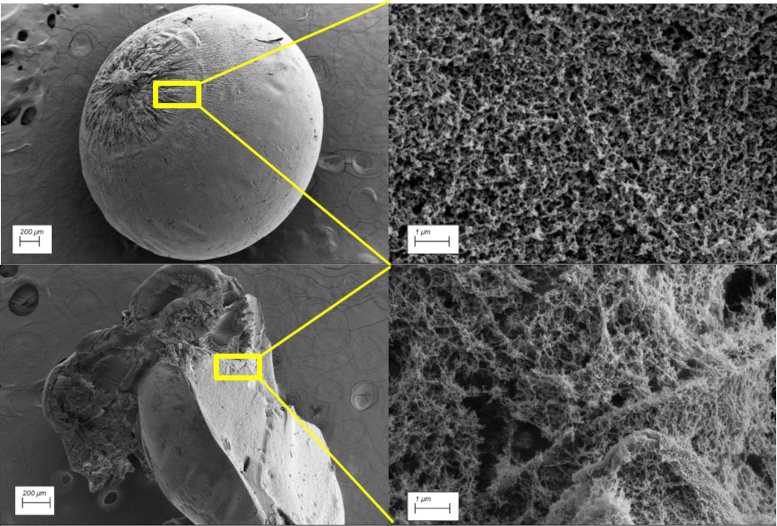German and French researchers are studying new ways to extract cellulose from waste hemp fibers to make aerogels, high-tech materials that have a wide range of industrial uses.
While aerogels have historically been made from highly polluting inorganic matter such as silica or alumina, the research aims to advance their development from more eco-friendly organic polymers and carbon.
“This opens the door to use waste hemp fibers as a main source of cellulose for these materials, which can be extracted under mild conditions, using cheap and safe reactants,” said Diogo Costa, a fellow in the Marie Skłodowska-Curie European Industrial Doctorate program who is researching the material as part of his wider study into biobased and circular economies.
Costa’s research is funded by a grant from the Biobased Value Circle (BVC), a consortium of four European universities, one research institute and nine European companies.
What are aerogels?
First invented in the 1930s, aerogels, in which the liquid content is replaced by air, have received growing attention over the last 20 years for their application to supercapacitor, ultracapacitor, battery and desalination electrodes; as high-temperature insulation material; and as a catalyst for carbon nanotubes and other materials. Solid but porous, the material offers the key advantage of low thermal conductivity – heat transfer.
NASA uses aerogels for insulation in launch and shuttle vehicles, life support equipment, rocket engine test stands and hand and feet insulation for astronauts. Commercial applications include pipe insulation, construction, appliances and refrigeration equipment, and automobiles, as well as consumer applications, such as apparel.

Research so far has shown that aerogels produced from hemp-extracted cellulose in the form of beads, sheets and cylindrical monoliths are as efficient as those obtained from commercial industrial cellulose, according to Costa.
Growth opportunities
Cellulose, which comprises 65%-75% of hemp fibers’ bio-chemical makeup, is particularly interesting due to its abundance, biocompatibility and because it can be obtained from waste resources, Costa said.
“This new set of materials will open new opportunities for growth to hemp-based companies, and can create new and better jobs in rural communities, all the while offering the well-known environmental benefits of hemp,” he said. “Aerogels will become an increasingly bigger and more interesting market that the hemp industry can participate in, from producers who want to profit from their wastes, to new sectors, new companies and investors.”
According to New York-based researcher Future Market Insights, the aerogel market is roughly $1 billion and is expected to grow 17% annually through 2030.
Research partners
Costa’s research, which spans product development and supply chain considerations, is in cooperation with the Cologne-based German Aerospace Center (DLR), which is developing the materials to replace current oil-based thermal insulators, and startup KEEY Aerogel, Habsheim, France, both of which are BVC consortium members.
In addition to exploring the potential for low-quality hemp fibers left over from stalk processing as the basis for the new class of non-polluting, bio-based aerogels, Costa is also studying how to upscale production and commercialize such products, which he said are key challenges.

“Current methods for developing hemp cellulose-based aerogels are still time consuming,” Costa said. “Their upscaling has to be optimized and many other factors have to be considered, namely resistance to humidity, microbial activity and combustion, among others,” he said.
Slimming down logistics chains and reducing dependence on raw materials imported from abroad are key challenges addressed in broader EU policies aimed at advancing bio-based and circular economic models, the broader context of Costa’s research.
Fit with ‘Green Deal’
With the EU having designated hemp an “essential crop” under the Union’s Common Agriculture Policy (CAP), and considering the ambitious environmental goals represented by the European Green Deal, Costa’s project fits neatly into the Union’s strategy to develop those alternative economic models.
“The valorization of crops such as hemp, flax, corn and wheat, and respective residues, are one of the main alternatives under research in the EU,” Costa said.
Under the European Green Deal and the European Bioeconomy Strategy, the EU is expected to update legislation and labels dedicated to bio-based products, and launch a €100 million circular thematic investment platform, among other activities aimed at mobilizing stakeholders representing academia, industry and society, Costa observed.
Furthermore, the EU has invested €3.7 billion in research and innovative bioeconomy projects over the past seven years, and that investment is expected to increase to €10 billion by 2030 under Horizon Europe, a key research and innovation funding program that addresses climate challenges.
Consortium’s makeup
Companies participating in the Biobased Value Circle consortium are hiring or hosting PhD fellows for long internships as part of a program to train a new generation of researchers to support the development of innovative bio-based products that can lead to more sustainable economies.
In addition to KEEY, the companies are B4Plastics, Belgium; BioEvol Srl, Italy; ChemStream BVBA, Belgium; Fibrothelium, Germany; IFG Asota GmbH, Austria; Umlaut Transformation GmbH, Germany; Spintex Engineering Ltd., UK; and Technical Proteins Nanobiotechnology S.L., Spain.
Participating universities are the Aachen-Maastricht Institute for Bio based Materials at the University Maastricht; Karl Franzens University Graz, Austria; National University of Ireland Galway; BioTex Institute of the University of Aachen, Germany.

